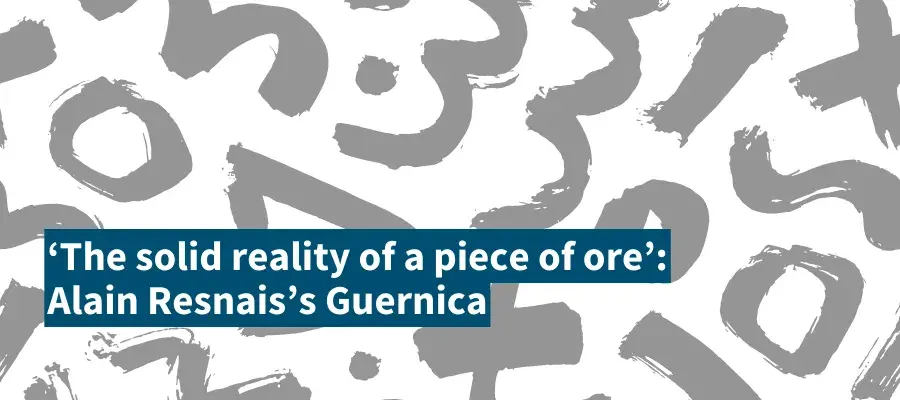In brief
Date - 27 February 2024
Venue - Lecture Theatre B, 40 George Square
Speaker - Dr Tamara Trodd (Edinburgh College of Art)
About the event
Alain Resnais’s 14-minute film, Guernica (1950), co-directed with Robert Hessens, with a script by Paul Éluard and music by Guy Bernard, is a film composed entirely of a montage of still images: a combination of historic photographs of the bombing of the Basque town, Guernica, in 1937, with close-ups of paintings and sculptures by Pablo Picasso.
To an extent, it may be understood as continuing a tradition of the European ‘art’ film: a once-popular and mainstream form of cinema, represented for example by the films of Italian director, Luciano Emmer, or the Belgian director Henri Storck. And yet, Resnais’s film also radically departs from this genre: its reference to the recent, real-world atrocity of the bombing and its use of an intensely expressive musical score transforming the work into a film which speaks forcefully not just about art, but also about recent history and politics.
Marking a break too with Resnais’s own previous style (as established in his more conventional earlier films, Van Gogh (1948) and Gauguin (1949)), Guernica is still astonishing in its impact on the viewer today, as well as in the extent to which it announces a seemingly fully-formed, radical and accomplished style, which can be seen to have shaped later works of French cinema including Chris Marker’s La Jetée (1962). In this talk, Tamara will examine the ways in which Resnais shows us with Guernica how the close scrutiny of art may in André Bazin’s words, ‘take on the solid reality of a piece of ore’: in so doing contributing to a wider reworking of the way in which art may take purchase on ‘reality’, at this moment in mid-century modernist art.
About the speaker
Tamara Trodd is Senior Lecturer in Modern and Contemporary Art in the History of Art department at the University of Edinburgh. She is currently completing a new book, Realism Reconfigured: Historical Returns in Contemporary Art.
She is the author of The Art of Mechanical Reproduction: Technology and Aesthetics from Duchamp to the Digital (Chicago, 2015), and the edited collection, Screen/Space: The Projected Image in Contemporary Art (Manchester, 2011). Her essay, ‘Creation and Decreation in Tacita Dean’s Antigone’ is forthcoming in October.
How to attend
This event is free to attend and open to all. No registration is required.
Are you interested in studying Intermediality?
As the first UNESCO World City of Literature, home of the Edinburgh International Festival and a major cultural hub, Edinburgh is the ideal place for the study of intermediality. Our one-year taught masters programme draws on world-class teaching and research expertise across media, from literature to film, music, painting, photography and visual culture more widely.
The programme will make you conversant with intermedial theory and equip you with the critical tools and historical background for understanding and analysing a wide range of intermedial phenomena across different periods and cultures. It can also be completed part-time over two years.
Find out more about studying with us
Related links


